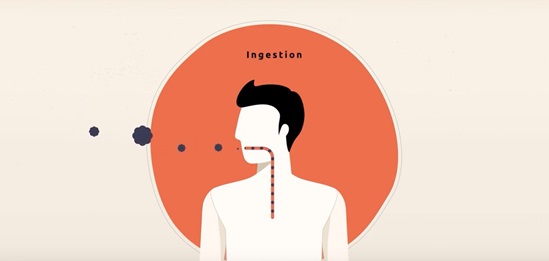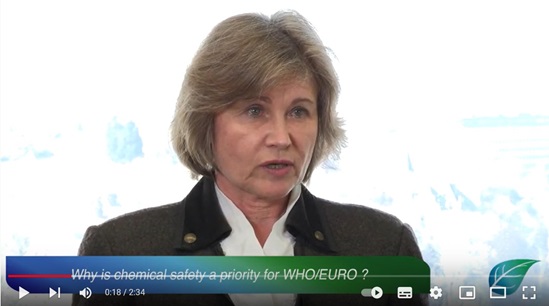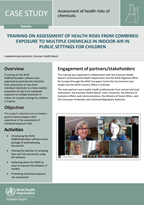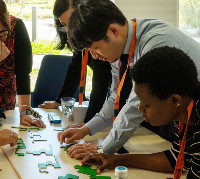Chemical safety
Chemicals are essential for economic development and well-being, but can pose significant risks to human health if not managed in a sound way.
Hazardous chemicals such as asbestos, lead, mercury, other toxic metals, polychlorinated and polyfluorinated compounds (thousands of chemicals that are toxic, extremely resistant to degradation in the environment, and bioaccumulating in food chains), and many others can be present in a variety of items and settings. These include food, household and agriculture products, cosmetics, building materials, occupational settings, and the environment (indoor and ambient air, water, soil).
These chemicals can cause acute and chronic health disorders throughout the life-course, leading to diseases such as cancers; urinary, reproductive, cardiovascular and respiratory diseases; allergies; neurodevelopmental and congenital disorders; and endocrine disruption.
With an ever-increasing number and volume of chemicals and chemical products used in daily life, human exposure to chemical agents is also likely to increase. Governments and other stakeholders involved in chemicals management should hence make additional efforts to protect health from hazardous exposure.
In the WHO European Region, exposure to selected chemicals is estimated to have caused 269 500 deaths in 2019. This figure is most likely underestimated, since it is based on evaluations for the few chemicals or groups of chemicals for which relevant scientific data are available.
In the WHO European Region and globally, WHO prioritizes the protection of the population, especially of children as the most vulnerable group, from exposure to hazardous chemicals.
To this end, WHO promotes non-hazardous or less hazardous alternatives and other health protection interventions in countries, such as implementation of relevant agreements; strengthening of policies and the legal basis for the regulation of chemicals, their mixtures and wastes; capacity-building; and awareness-raising.
WHO also promotes the use of tools and instruments to assess exposure and risk to justify decisions to prevent or minimize impacts, and advocates for greater involvement of the health sector to bring a public-health perspective into policy-making.
WHO supports countries’ efforts to reduce and eliminate health risks from exposure to hazardous chemicals, including within the framework of global and regional commitments. Priority areas are:
- developing methodologies and tools to assess exposure to chemicals and risk for health;
- providing advice on the development of national policies, strategies and regulations for chemicals management, ensuring involvement of all stakeholders and greater involvement of the health sector;
- promoting the establishment and strengthening of institutional infrastructure in the health sector needed for improving chemicals management, such as poison centres;
- encouraging the use of safe materials as alternatives to hazardous chemicals such as lead, mercury, pesticides and endocrine-disrupting chemicals;
- advocating for the reduction of releases of hazardous chemicals into the environment, in particular persistent and so-called forever chemicals, pharmaceuticals, pesticides, and endocrine-disrupting chemicals, and for the reduction of their use in consumer products; and
- facilitating the collection, exchange and availability of information.















